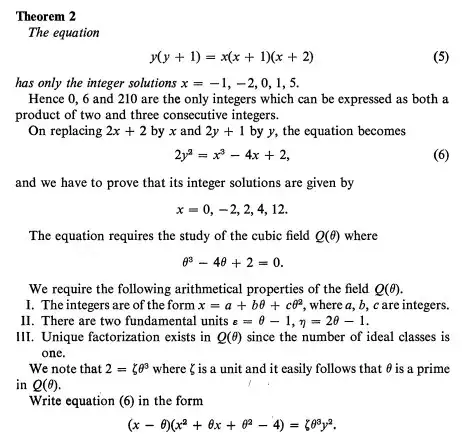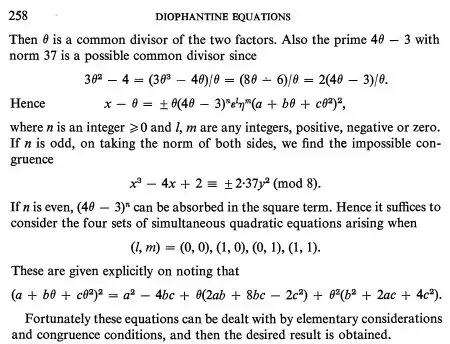$6$ and $210$ share the property that both are the products of both two and three consecutive numbers. $6$ is $2\times3$ and $1\times2\times3$ and $210$ is $14\times15$ and $5\times6\times7$. It was easy enough to write a program to search for more numbers with this property, I found that there were no more up to at least $1{,}000{,}000{,}000{,}000$ ($1$ Trillion). But it is beyond me to prove that there are either no more numbers like this or to find the next one. Any ideas?
Asked
Active
Viewed 465 times
16
1 Answers
26
In his book Diophantine equation,(page $257-258$) L.J.Mordell proved that the equation $$y(y+1)=x(x+1)(x+2)$$ has only the integer solutions $x=-1,-2,0,1,5.$


lsr314
- 15,806
solving for $a,$ we get $$\frac{-1\pm \sqrt{4b^3-4b+1}}2$$ So, we need $4b^3-4b+1$ to be perfect square as it is always odd
– lab bhattacharjee May 29 '13 at 16:04